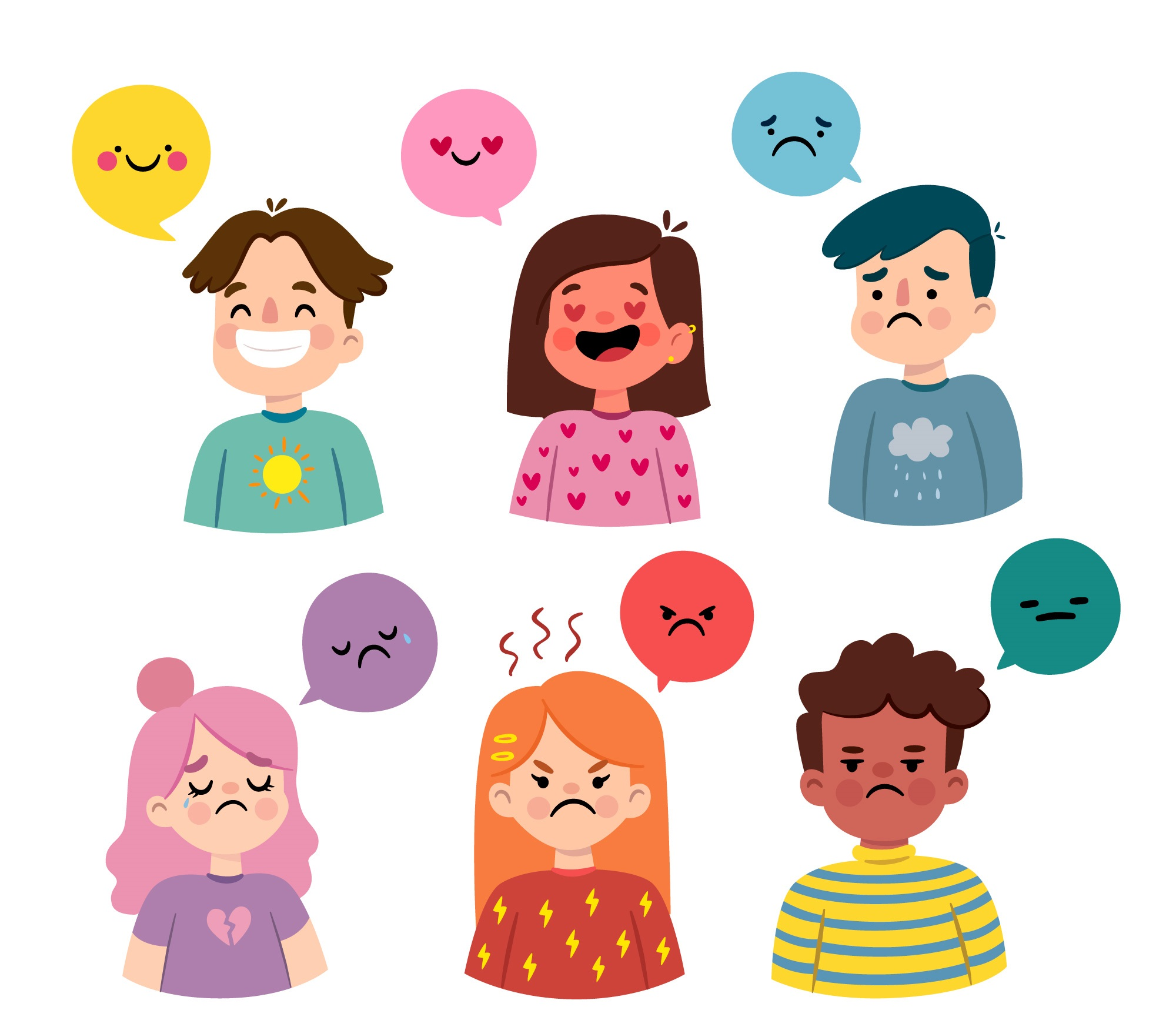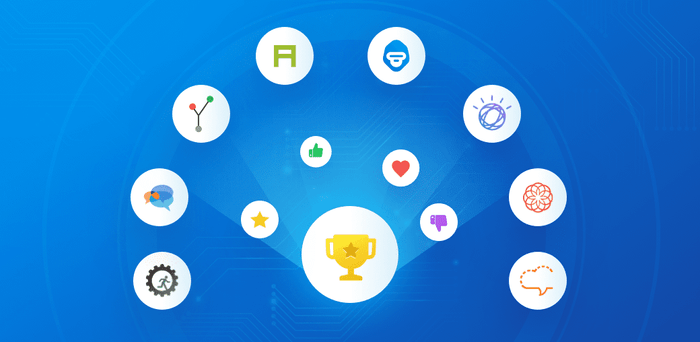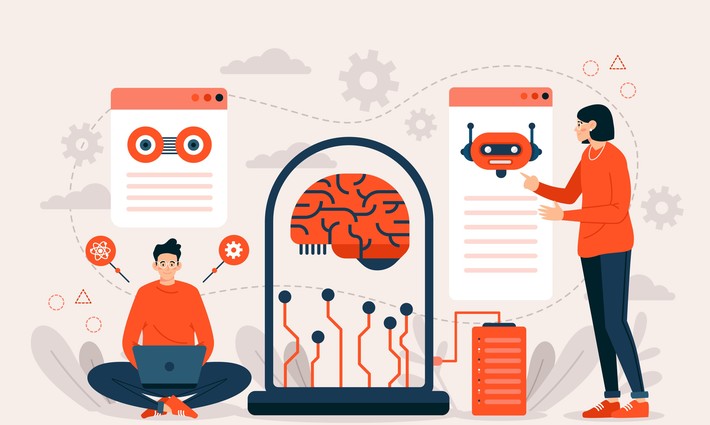
Cross-Channel Consistency: Strengthening Brand Identity with AI Marketing
September 18, 2025
AI Marketing in Action: Detecting and Preventing Digital Fraud
September 18, 2025This comprehensive blog post will delve deep into Emotion Analysis in AI Marketing. We’ll explore how understanding and decoding customer sentiments can enhance campaign success. Brace yourself for a journey through the intricacies of emotional AI, its application in marketing, and real-life success stories that will leave you inspired.

Introduction to Emotion Analysis
Understanding the Basics
Emotions are the intricate threads that weave the tapestry of human existence. The unseen forces guide our thoughts, decisions, and interactions with the world around us. In marketing, emotions are the bridge that connects consumers to brands in a way that transcends mere logic and reason.
At the heart of emotional analysis lies a fundamental understanding of these emotions and how they manifest in the digital realm. To embark on this journey, we must first grasp the basics.
Emotions 101
Emotions are complex psychological states encompassing a wide range of feelings and reactions. They are often categorized into basic emotions, such as joy, anger, fear, sadness, surprise, and disgust, as proposed by psychologists like Paul Ekman. However, within these basic categories, emotions branch out into numerous nuanced experiences influenced by individual and cultural factors.
Consider, for a moment, the emotion of “happiness.” It’s not a one-size-fits-all concept. For one person, happiness might be the euphoria of achieving a personal goal. At the same time, for another, it could be the simple pleasure of sipping a cup of hot chocolate on a chilly evening.
In the context of marketing, understanding these nuances is crucial. It’s not enough to know that a customer is “happy.” Marketers must decipher what precisely elicits happiness – is it a product feature, a marketing message, or a sense of belonging to a particular brand community?
The Role of Emotions in Marketing
Emotions are the hidden influencers in the world of marketing. While product features, pricing, and convenience play significant roles, the emotional connection between a brand and its customers often tips the scales in favour of one brand over another.
Think about some of the most memorable advertisements you’ve encountered. Chances are, they stirred emotions within you. Perhaps they made you laugh, cry, or even contemplate the deeper meaning of life. Regardless of the emotion, those advertisements left an indelible mark in your memory.
Emotions shape our perceptions, affect our purchase decisions, and influence our brand loyalties. When a brand manages to evoke a genuine emotional response from its customers, it is forging a connection that transcends transactional relationships.
Why Emotion Analysis Matters in AI Marketing
Understanding customer emotions is a game-changer in the era of data-driven marketing, where every click, view, and interaction is tracked and analyzed. This is where Emotion Analysis steps in as a formidable ally for marketers.
Tailoring Content to Emotions
Imagine this scenario: you’re scrolling through your social media feed, and an advertisement appears. It’s not just any ad; it’s an ad that understands precisely how you’re feeling at that moment. This is the magic of Emotion Analysis.
AI-driven algorithms can analyze user data in real time to gauge their emotional state. The ad might offer relaxation products or services if you’re feeling stressed. If you’re experiencing joy, it could showcase products designed to enhance your happiness. This tailoring of content based on emotions significantly improves engagement and conversion rates.
Predicting Consumer Behavior
Understanding customer emotions goes beyond just reacting to their current state; it involves predicting their future behaviour. Emotion Analysis, when combined with historical data and machine learning models, can provide valuable insights into what products or services a customer will likely be interested in following.
Imagine an e-commerce platform that, based on your recent emotional state and past purchases, predicts that you might be interested in a wellness retreat package. By offering you this suggestion right now, the platform increases the chances of converting your interest into a sale.
Optimize Content for Emotional Impact
Not all content is created equal, especially in the digital age when attention spans are fleeting. Emotion Analysis allows marketers to assess the emotional impact of their content. By analyzing which types of content elicit the most passionate responses, marketers can refine their strategies for maximum impact.
For instance, a pet food brand might discover that heartwarming stories of rescued animals elicit their audience’s most vital emotional reactions. With this insight, they can create more content, knowing it will resonate deeply with their audience.
Building Authentic Relationships
In an age where authenticity is highly prized, understanding and acknowledging customer emotions is a powerful way to build genuine relationships. When a brand shows that it cares about its customers’ feelings and experiences, it fosters trust and loyalty.
Consider the example of a customer who has had a negative experience with a product. If the brand responds empathetically and resolves the issue promptly, the customer’s negative emotion can be transformed into a positive one – a loyal customer who feels heard and valued.
As we’ve explored, Emotion Analysis is not just a buzzword; it’s a strategic imperative for modern marketing. It allows businesses to delve deeper into the minds and hearts of their customers, creating marketing campaigns that resonate on a profound level. Now that we’ve laid the foundation, let’s delve into the science behind Emotion Analysis.

The Science Behind Emotion Analysis
Psychology of Emotions
To understand Emotion Analysis fully, we must journey into the intricate landscape of human emotions. Emotions are not just fleeting feelings; they are complex psychological phenomena with deep roots in our evolutionary history and individual experiences.
The Evolution of Emotions
Emotions have been part of the human experience for millennia, shaped by our evolution as social beings. They served as adaptive responses to various situations, helping our ancestors survive and thrive. For example, fear helped them react quickly to threats, while joy strengthened social bonds within their groups.
While the core emotions remain relatively constant across cultures and time, their expression and interpretation can vary significantly. Cultural, societal, and individual factors shape how emotions are experienced and expressed.
The Emotional Spectrum
Emotions are not confined to a limited set of categories. They exist on a vast spectrum, ranging from subtle to intense, positive to negative. Consider the complexity of “happiness” alone. It can manifest as contentment, joy, ecstasy, or myriad other forms, each with unique nuances.
Psychologists have developed various models to understand and categorize emotions. One such model is Robert Plutchik’s “wheel of emotions,” which identifies primary and secondary emotions and how they relate. Understanding these nuances is essential for emotional analysis, as it allows for a more accurate interpretation of dynamic content in marketing materials.
How AI Deciphers Emotions
While humans have an innate ability to recognize and understand emotions in others, teaching machines to do the same is a complex challenge. This is where AI and machine learning come into play.
Natural Language Processing (NLP)
Natural Language Processing (NLP) is a vital tool for Emotion Analysis in text-based content. NLP algorithms analyze written or spoken language to detect emotional cues. Here’s how it works:
- Text Analysis: NLP algorithms break down text into constituent parts, including words, phrases, and sentences.
- Sentiment Analysis: The algorithms assess the sentiment of the text by analyzing keywords, sentence structure, and context. They look for words and phrases that are associated with particular emotions. For example, words like “happy,” “joyful,” and “celebration” might indicate a positive sentiment.
- Contextual Understanding: NLP models also consider the broader context of the text. They can discern sarcasm, irony, and other nuances that affect the emotional tone.
- Emotion Classification: After analyzing the text, NLP algorithms classify the emotional content into specific categories, such as joy, anger, sadness, or fear.
- Quantifying Emotions: Some NLP models go further by quantifying the intensity of emotions. For instance, they might determine whether the joy expressed in a text is mild contentment or exuberant happiness.
NLP’s ability to analyze and interpret text makes it invaluable for understanding the emotional content of customer reviews, social media posts, emails, and other text-based interactions.
Computer Vision (CV)
In the realm of visual content, such as images and videos, Computer Vision (CV) technologies take centre stage in Emotion Analysis. Here’s how CV deciphers emotions from visual cues:
- Facial Expression Analysis: One of the most well-known applications of CV in Emotion Analysis is facial expression recognition. Cameras and software analyze facial expressions to determine emotions accurately. Common expressions include smiles for joy, furrowed brows for anger, and tears for sadness. This technology has found applications in everything from market research to human-computer interaction.
- Body Language Interpretation: Beyond facial expressions, CV can also analyze body language and gestures to infer emotions. How a person stands, moves, or gestures can provide valuable clues about their emotional state.
- Physiological Signals: Some CV systems even consider physiological signals, such as heart rate variability and skin conductance, to gauge emotions. These signals provide a more holistic view of a person’s emotional response, reflecting both conscious and subconscious reactions.
- Voice Analysis: In audio content, voice analysis is another powerful tool. The tone, pitch, and cadence of speech can reveal a lot about a person’s emotional state. Voice analysis software can detect emotions like stress, excitement, or calmness, making it useful in call centre applications and automated voice assistants.
These technologies collectively enable machines to “see” and interpret emotions in visual and auditory content, expanding the scope of Emotion Analysis beyond just text-based data.
Emotion Recognition Technologies
The arsenal of Emotion Recognition Technologies is continually evolving, driven by advancements in AI, machine learning, and the increasing availability of data. Here are some notable methods and technologies in Emotion Analysis:
Facial Expression Analysis
Facial expression analysis remains a prominent and accessible method for recognizing emotions. It relies on cameras and software that can capture and interpret facial expressions. For instance, a smile might indicate happiness, while a furrowed brow could signify anger or frustration.
Facial recognition technology has applications in various industries, from retail (assessing customer reactions to products) to healthcare (detecting patient pain levels).
Voice Analysis
Our voices convey more than words–they also carry emotional cues. Voice analysis technology can discern the emotional tone of spoken language. Analyzing factors like pitch, tone, and speech patterns can detect emotions such as joy, sadness, or anger.
In customer service applications, voice analysis can help companies gauge the emotional state of callers. For instance, if a customer is agitated, the system can prioritize their call or route them to a human agent for more personalized assistance.
Biometric Sensors
Wearable devices equipped with biometric sensors have become increasingly prevalent. These sensors can track physiological responses that are indicative of emotional states. Here are a few examples:
- Heart Rate Variability (HRV): HRV measures the variations in time between successive heartbeats. It’s a non-invasive way to assess a person’s autonomic nervous system, which plays a significant role in emotional regulation. Elevated HRV might indicate a calm or positive emotional state, while reduced HRV can suggest stress or negative emotions.
- Skin Conductance: Also known as galvanic skin response (GSR), this measures the skin’s electrical conductance, which varies with sweat gland activity. Higher skin conductance can indicate emotional arousal or stress.
- Pupil Dilation: Pupil size can change in response to emotional stimuli. For example, pupils dilate in response to positive emotions or increased cognitive load.
Wearable devices incorporating these sensors can provide real-time insights into a person’s emotional state. This technology is precious in fields like healthcare, where it can aid in diagnosing and treating conditions like anxiety and depression.
These Emotion Recognition Technologies offer a glimpse into the potential of Emotion Analysis. As they advance, they open up new possibilities for understanding and leveraging emotions in various domains, including marketing.
Now that we’ve explored the science behind Emotion Analysis let’s delve into its myriad applications in marketing.

Applications of Emotion Analysis in Marketing
Tailoring Content to Emotions
Imagine this scenario: you’re scrolling through your social media feed, and an advertisement appears. It’s not just any ad; it’s an ad that understands precisely how you’re feeling at that moment. This is the magic of emotional analysis in action.
AI-driven algorithms can analyze user data in real time to gauge their emotional state. The ad might offer relaxation products or services if you’re feeling stressed. If you’re experiencing joy, it could showcase products designed to enhance your happiness. This tailoring of content based on emotions significantly improves engagement and conversion rates.
The Power of Personalization
In the world of marketing, personalization is the name of the game. Customers are inundated with a barrage of content daily, and generic messages often need to be made aware of the noise. Emotion Analysis allows marketers to cut through the clutter by delivering content that resonates personally.
Consider the example of an e-commerce platform. The platform can recommend products that align with their emotional needs by analyzing a user’s recent emotional state, perhaps determined by their social media activity or browsing behaviour. The platform might suggest wellness products, meditation apps, or soothing spa treatments if users have been browsing stress relief content. This level of personalization not only drives sales but also builds brand loyalty.
Crafting Emotional Narratives
Storytelling has always been a powerful tool in marketing, and Emotion Analysis takes it to the next level. Brands can use emotional insights to craft narratives that deeply resonate with their audience.
Let’s take the example of a travel company. Instead of just listing the features of a destination, they can create a narrative that taps into the emotions associated with travel – the excitement of exploration, the joy of discovery, and the sense of freedom. By evoking these emotions, they make their destination more appealing and memorable.
A/B Testing with Emotional Variations
A/B testing is a common practice in marketing, where two versions of an advertisement or email are compared to determine which performs better. Emotion Analysis can be integrated into A/B testing to assess which emotional variations resonate most with the target audience.
For instance, an online fashion retailer might test two versions of an email campaign: one emphasizing the joy of new arrivals and another highlighting the confidence of wearing their products. By measuring each version’s emotional responses and conversion rates, they can refine their future campaigns for maximum impact.
Real-time Emotional Feedback
Emotion Analysis isn’t just about predicting emotions; it’s also about responding to them in real time. Imagine an e-commerce website with a chatbot that can detect customer frustration based on typed responses. The chatbot could then switch to a more empathetic tone and offer assistance or discounts to alleviate the frustration. This real-time emotional feedback can turn a potentially harmful experience into a positive one, enhancing customer satisfaction and loyalty.
Emotion Analysis allows marketers to go beyond generic messaging and connect with their audience on a deeper level. By tailoring content to emotions, crafting emotional narratives, conducting A/B testing with emotional variations, and providing real-time dynamic feedback, brands can create more engaging and effective marketing campaigns.
Personalized Marketing Strategies
Gone are the days of one-size-fits-all marketing. In today’s hyper-connected world, customers expect personalized experiences, and Emotion Analysis makes it possible to deliver just that.
Understanding Individual Triggers
Emotion Analysis goes beyond segmenting customers based on demographics or purchase history. It delves into the individual emotional triggers that drive behaviour. For example, two customers might have similar browsing and purchasing patterns, but one might be motivated by a desire for adventure, while the other seeks comfort and security. Emotion Analysis helps uncover these nuanced differences.
Tailoring Product Recommendations
Personalized product recommendations are a hallmark of effective e-commerce platforms. Emotion Analysis furthers this by aligning recommendations with the customer’s emotional state. If a customer displays signs of stress or anxiety, the platform can prioritize relaxation, self-care, or stress management products. This level of personalization increases the likelihood of a purchase and enhances the customer’s overall experience.
Emotional Customer Journeys
Mapping out the customer journey is a standard practice in marketing. However, Emotion Analysis introduces a new layer of complexity by considering the customer’s emotional journey. Brands can design experiences that cater to the customer’s emotional needs at different touchpoints.
For example, a luxury hotel chain might recognize that customers often experience a mix of excitement and anticipation when booking a vacation. They can enhance this emotional journey by sending personalized emails with travel tips, destination highlights, and exclusive offers, building on the customer’s positive emotions.
Emotional Loyalty Programs
Loyalty programs are robust for retaining customers, but Emotion Analysis can supercharge their effectiveness. By tracking and understanding the emotional responses of loyalty program members, brands can tailor rewards and incentives that resonate on a personal level.
Consider a coffee chain with a loyalty program. Instead of offering generic discounts, they could use Emotion Analysis to identify when a customer feels stressed or tired. In response, they might send a special offer for a calming herbal tea or an indulgent dessert, effectively addressing the customer’s emotional needs and strengthening their loyalty.
Customer-Centric Communication
Effective communication is the cornerstone of customer relationships. Emotion Analysis allows brands to communicate with customers in ways that reflect their emotional states. For instance, the brand’s messages can be upbeat and enthusiastic if a customer displays excitement. Conversely, the tone can be reassuring and empathetic if a customer feels anxious. This level of emotional intelligence in communication fosters trust and connection.
Emotion Analysis enables businesses to move beyond generic marketing strategies and embrace the power of personalization. By understanding individual triggers, tailoring product recommendations, mapping emotional customer journeys, implementing emotional loyalty programs, and adopting customer-centric communication, brands can create deeply personalized marketing experiences that resonate with each customer on a profound level.
Improving Customer Engagement
Engagement is the lifeblood of digital marketing. You need more than just to reach customers; you must capture their attention and keep them engaged. Emotion Analysis provides the insights required to achieve this.
Emotional Content Preferences
Not all content is created equal in terms of emotional impact. Some types of content resonate more strongly with specific emotions. Emotion Analysis helps marketers identify the most effective content types for engaging their audience.
For instance, a fitness brand might discover inspirational stories about individuals overcoming challenges and achieving their fitness goals that resonate strongly with their audience’s emotions. With this insight, they can create more content to keep their audience engaged and motivated.
Timing Emotional Content
The timing of content delivery can significantly impact engagement. Emotion Analysis can help identify the most opportune moments to deliver emotionally charged content. For example, a wellness app might use emotional analysis to determine when a user is likely to feel stressed and offer a meditation session or stress-relief tips at that moment.
Personalized Emotional Experiences
Emotion Analysis allows for the creation of personalized emotional experiences. Imagine a music streaming platform that suggests songs based on your musical preferences and considers your current emotional state. If you’re feeling upbeat, it might curate a playlist of energetic songs to enhance your mood. It could offer a collection of soothing and introspective tracks if you’re feeling reflective.
Emotional Storytelling
Storytelling is a potent tool for engagement, and emotional analysis can enhance its effectiveness. By crafting narratives that tap into the emotions of the audience, brands can create stories that are not just compelling but emotionally resonant.
For instance, an outdoor apparel brand might tell the story of a group of friends embarking on an epic adventure. By infusing the narrative with the emotions of excitement, camaraderie, and the thrill of exploration, the brand can engage its audience on a deep emotional level.
Emotional Gamification
Gamification is a popular strategy for engaging users, and Emotion Analysis can add a new dimension. Games and interactive experiences can be designed to evoke specific emotions. For example, a mobile app might use gamification to encourage users to practice mindfulness meditation. By incorporating Emotion Analysis, the app can adapt the meditation exercises based on the user’s emotional state, providing a more personalized and engaging experience.
Emotion Analysis revolutionizes the way marketers think about customer engagement. By understanding emotional content preferences, timing emotional content delivery, personalizing emotional experiences, incorporating emotional storytelling, and infusing emotional elements into gamification, brands can create marketing campaigns that captivate and retain their audience’s attention.
Case Study: Coca-Cola’s Emotional Advertising
Let’s delve into a real-world case study to illustrate the power of emotional advertising and emotional analysis: Coca-Cola’s “Share a Coke” campaign.
Coca-Cola, one of the world’s most iconic brands, has mastered evoking emotions through its marketing campaigns. One of its standout campaigns, “Share a Coke,” is a testament to the emotional connection a brand can create with its customers.
The Concept
The “Share a Coke” campaign took a simple yet emotionally resonant approach. Instead of featuring the Coca-Cola logo on its bottles, the brand replaced it with common first names. The idea was that consumers could find a Coke bottle with their name or the name of a loved one and share it with them.
Emotional Resonance
At its core, the campaign tapped into the emotions of personal connection and sharing. It wasn’t just about selling a beverage but about creating a memorable and emotional experience. When someone found a Coke bottle with their name, it felt like a personal gift, evoking joy, surprise, and belonging.
Personalized Marketing
The “Share a Coke” campaign was a brilliant example of personalized marketing. By featuring various names, including popular and less common ones, Coca-Cola ensured that nearly everyone could find a bottle with a name they cared about. This personalization created a sense of inclusion and made customers feel like the brand spoke directly to them.
User-Generated Content
The emotional impact of the campaign extended beyond Coca-Cola’s marketing efforts. People started sharing photos and stories of their personalized Coke bottles on social media, turning the campaign into a user-generated content phenomenon. This organic sharing amplified the emotional resonance of the campaign and created a sense of community among Coke drinkers.
Long-Term Impact
The “Share a Coke” campaign wasn’t just a short-term marketing gimmick; it had a lasting impact. It became an annual tradition, with Coca-Cola reintroducing the campaign each summer. This consistency reinforced the emotional connection between the brand and its customers, making it a beloved and enduring part of Coca-Cola’s marketing strategy.
The “Share a Coke” campaign’s success highlights emotional advertising’s profound impact. By understanding the emotions of sharing, personal connection, and inclusivity, Coca-Cola created a campaign that resonated deeply with its audience and became a cultural phenomenon.
Challenges and Limitations
While Emotion Analysis holds immense potential, it has its challenges and limitations. Acknowledging these obstacles to harness the power of emotions effectively in marketing is crucial.
Ethical Considerations
Emotion Analysis raises ethical concerns, particularly regarding data privacy and consent. Collecting and analyzing user data, incredibly emotional data, requires careful handling. Brands must obtain informed consent for data collection and use and be transparent about how dynamic data will be used in marketing campaigns. Ethical practices are essential to build and maintain trust with customers.
Handling Negative Emotions
Not all emotions in marketing are positive. Negative emotions, such as anger or sadness, can challenge marketers. Crafting campaigns that resonate with negative emotions without appearing insensitive or opportunistic requires finesse and empathy. Brands must tread carefully when addressing sensitive emotional states.
Cross-Cultural Sensitivity
Emotions are culturally influenced, and what evokes one emotion in one culture might trigger a different one in another. Marketers operating in global markets must be acutely aware of these cultural nuances to avoid misunderstandings or cultural insensitivity. Emotion Analysis models must be trained to account for cultural variations in emotional expression.
Data Privacy Concerns
As AI advances in emotional analysis, data privacy becomes paramount. Customers may be uncomfortable with their emotional data being collected and analyzed. Brands must balance between deriving valuable emotional insights and respecting user privacy. Implementing robust data protection measures and transparent data usage policies is essential.
Emotional Manipulation
There is a fine line between using emotional analysis to understand and connect with customers’ emotions and using it to manipulate their feelings. Marketers must be cautious not to exploit emotional vulnerabilities or engage in manipulative practices. Trust is easily eroded if customers feel their emotions are used for commercial gain.
Accuracy and Bias
Emotion Analysis algorithms are not infallible. They may only sometimes accurately interpret emotions, leading to misinterpretations and miscommunications. Additionally, bias in training data can lead to inaccurate results, as certain emotions or emotional expressions may be underrepresented or overrepresented in the data.
Emotional Fatigue
Constantly bombarding customers with emotionally charged content can lead to emotional fatigue. Customers may become desensitised or even irritated if every marketing message tries to evoke strong emotions. Brands must balance emotional engagement and providing informative, non-emotional content.
Understanding and addressing these challenges and limitations is crucial for successful Emotion Analysis in marketing. Brands that navigate these hurdles with integrity and empathy can leverage the power of emotions to create more meaningful and effective marketing campaigns.

Tools and Technologies for Emotion Analysis
AI-Powered Emotion Analysis Tools
A plethora of AI-powered tools are available for Emotion Analysis. These tools utilize Natural Language Processing (NLP) and Computer Vision (CV) techniques to decode emotions from text, speech, or visual content. Here are some popular options:
- IBM Watson: IBM Watson offers a suite of AI-powered services for emotional analysis. Its Natural Language Understanding (NLU) service can analyze text for sentiment and emotion, identifying emotions like joy, anger, sadness, and more. Watson also provides Visual Recognition capabilities for analyzing emotions in images and videos.
- Microsoft Azure Cognitive Services: Microsoft Azure Cognitive Services includes the Text Analytics API, which can analyse sentiment and extract emotional insights from text data. Azure also offers the Computer Vision API for exploring emotions in images.
- Google Cloud Natural Language: Google Cloud Natural Language offers sentiment analysis capabilities that can determine the emotional tone of text, classifying it as positive, negative, or neutral. Google’s Vision AI provides similar capabilities for images and videos, including emotion recognition.
- Amazon Comprehend: Amazon Comprehend is an Amazon Web Services (AWS) NLP service with sentiment analysis features. It can detect positive, negative, neutral, or mixed sentiments in text data. AWS also offers Rekognition for analyzing emotions in images and videos.
- Affectiva: Affectiva specializes in Emotion AI and offers a range of tools and APIs for analyzing emotions in various contexts, including market research, advertising, and customer experience. Their Emotion SDK can explore facial expressions, voice, and emotions in video content.
- OpenAI: OpenAI’s GPT-3 and GPT-4 models can be used for Emotion Analysis by processing text data. These models can identify emotional cues and provide insights into the emotional tone of text content.
These AI-powered tools make Emotion Analysis accessible to businesses of all sizes, allowing them to extract valuable emotional insights from text, images, and videos. Integrating these tools into marketing platforms is crucial in leveraging emotions effectively.
Integrating Emotion Analysis into Marketing Platforms
To leverage Emotion Analysis effectively, it’s crucial to incorporate it into your existing marketing platforms. Many marketing automation tools offer seamless integration with Emotion Analysis APIs, allowing you to tailor your campaigns based on emotional insights. Here’s how integration can enhance your marketing efforts:
- Personalized Email Campaigns: Email marketing remains a powerful tool, and Emotion Analysis can enhance effectiveness. By integrating Emotion Analysis into your email marketing platform, you can craft personalized email campaigns that resonate with the emotions of each recipient. For example, if a customer has recently shown signs of excitement or joy in their interactions with your brand, you can send them emails that capitalize on these positive emotions.
- Emotional Content Recommendations: Content marketing relies on delivering valuable and relevant content to your audience. By integrating Emotion Analysis into your content management system (CMS), you can recommend articles, blog posts, videos, or other content that aligns with the emotional state of your website visitors. If a visitor’s behaviour suggests curiosity, your CMS can prioritize content that caters to those emotions.
- Emotional Social Media Management: Social media is a dynamic and emotionally charged platform. Integrating Emotion Analysis into your social media management tools allows you to monitor the emotional responses of your audience in real time. When you detect spikes in positive emotions related to your brand or industry, you can capitalize on those moments to engage with your audience effectively.
- Emotion-Enhanced Customer Relationship Management (CRM): Your CRM system is the backbone of your customer relationships. By integrating Emotion Analysis into your CRM, you can gain deeper insights into the emotional states of your customers. This allows your sales and support teams to tailor their interactions based on customer emotions. For instance, if a customer expresses frustration in their interactions with your support team, the CRM can prompt agents to respond with empathy and solutions.
- Emotional Data Analytics: Integrating Emotion Analysis into your data analytics tools provides a holistic view of your customer’s emotional journey. It allows you to correlate emotional states with specific actions or behaviours, such as conversions, churn rates, or engagement levels. This data-driven approach enables you to refine your marketing strategies based on the emotional impact of your campaigns.
- Emotional Chatbots and Virtual Assistants: Chatbots and virtual assistants are becoming increasingly sophisticated, and emotional analysis can take them to the next level. By integrating Emotion Analysis into your chatbot or virtual assistant, you can create conversational agents that adapt their tone and responses based on the emotional cues of the user. This humanizes the interaction and enhances the user experience.
Integrating Emotion Analysis into your marketing platforms empowers you to create emotionally intelligent campaigns and interactions. It allows you to understand, connect with, and engage your audience deeper, ultimately driving better results and customer satisfaction.
Emotion Analysis in Market Research
Market research is a domain where emotional analysis can yield invaluable insights. Traditional market research methods often rely on surveys and questionnaires, which may only capture part of customer emotions. Emotion Analysis offers a more nuanced approach to understanding consumer sentiment.
- Emotional Customer Surveys: Integrating Emotion Analysis into customer surveys allows you to extract emotional insights from open-ended responses. Instead of relying solely on structured questions, you can analyze the emotional content of customer feedback. For example, if a customer provides feedback about a recent product experience, Emotion Analysis can reveal whether they felt satisfied, frustrated, or delighted.
- Emotional Social Media Listening: Social media platforms are treasure troves of emotional data. By using Emotion Analysis tools to monitor social media conversations related to your brand or industry, you can gain real-time insights into customer sentiment. This enables you to respond promptly to positive or negative emotions expressed by customers and adjust your marketing strategies accordingly.
- Emotional Heatmaps: Traditional heatmaps provide insights into where users click and scroll on a website. Emotion Analysis takes this a step further by creating emotional heatmaps. These heatmaps reveal which areas of your website evoke strong emotional responses. For example, you can identify which product images or headlines trigger joy or curiosity, helping you optimize your website for emotional engagement.
- Emotional Focus Groups: Conducting focus groups with Emotion Analysis tools can provide deeper insights into consumer perceptions. Instead of relying solely on verbal feedback, you can analyze facial expressions, tone, and body language to gauge emotional reactions. This method is precious for assessing emotional responses to new product prototypes or marketing campaigns.
- Emotional Competitor Analysis: Understanding how consumers emotionally respond to your competitors can give you a competitive edge. Emotion Analysis can help you monitor and analyze customer sentiments related to competing brands. This information can inform your marketing strategies, allowing you to capitalize on gaps or weaknesses in your competitors’ emotional engagement efforts.
Emotion Analysis in Content Creation
Effective content creation hinges on understanding your audience’s emotional triggers and tailoring content to resonate with those emotions. Emotion Analysis can be integrated into content creation to ensure your content strikes an emotional chord with your audience.
- Emotional Keyword Research: Keyword research is a fundamental part of SEO and content creation. Emotion Analysis can be applied to keyword research to identify emotionally charged keywords relevant to your industry. For example, if you’re in the wellness industry, Emotion Analysis might reveal that keywords like “stress relief” and “calmness” evoke positive emotions. Incorporating these keywords into your content can enhance its emotional impact.
- Emotional Tone Analysis: Emotion Analysis tools can assess the emotional tone of your content before publication. For instance, if you’re creating a blog post about travel destinations, the tool can analyze the text to ensure it conveys the desired emotional tone, such as excitement, wanderlust, or relaxation.
- Emotional Image and Video Selection: Visual content plays a pivotal role in evoking emotions. Emotion Analysis can assist in selecting images and videos that align with the emotional goals of your content. For example, if you’re creating a promotional video for a fitness brand, the tool can help you choose footage that conveys determination, achievement, and motivation.
- Emotional Content Optimization: After content creation, Emotion Analysis can be used to optimize and fine-tune the emotional impact of your content. For instance, if you’re running a social media campaign for a fashion brand, the tool can analyze the emotional responses of your audience to your posts. If specific posts evoke strong positive emotions, you can create more content in a similar vein to maximize engagement.
- Emotional Content Testing: A/B testing is a common practice in content marketing, but Emotion Analysis can add a new layer. Instead of comparing click-through rates, you can measure the emotional impact of different content variations. This allows you to refine your content strategies based on emotional engagement metrics.
Emotion Analysis in Customer Support
Emotion Analysis is not limited to marketing; it also plays a crucial role in customer support and service. Understanding and responding to customer emotions effectively can enhance the overall customer experience.
- Emotion-Powered Chatbots: Chatbots are often the first point of contact for customer inquiries. Emotion Analysis can be integrated into chatbots to detect and respond to customer emotions. For example, if a customer expresses frustration, the chatbot can escalate the issue to a human agent or offer empathetic responses.
- Emotional Ticket Prioritization: In customer support ticketing systems, not all issues are equal regarding emotional impact. Emotion Analysis can prioritize support tickets based on the customer’s emotional state. Tickets with strong negative emotions, such as anger or disappointment, can be flagged immediately.
- Emotional Feedback Analysis: Customer feedback is a valuable source of emotional insights. Emotion Analysis tools can analyze customer reviews and feedback to gauge overall sentiment and identify specific emotional pain points. This information can guide improvements in products and services.
- Emotional Support Agent Training: Emotion Analysis can train support agents to handle customer emotions effectively. Agents can be provided real-time emotional insights about customers they are interacting with. This helps them tailor their responses with empathy and understanding.
- Emotional Customer Surveys: Post-interaction surveys can include questions that gauge the emotional satisfaction of customers. Emotion Analysis can process survey responses to identify trends and areas where emotional support can be improved.

The Future of Emotion Analysis in AI Marketing
Advanced Emotion Prediction
Emotion Analysis’s future in AI marketing promises even more accurate and advanced emotion prediction. AI models will continue to evolve, allowing marketers to predict and understand customer emotions with unprecedented precision. This will enable more personalized and emotionally resonant marketing campaigns.
- Real-time Emotion Prediction: AI algorithms will become increasingly adept at real-time emotion prediction. They will analyze user data and interactions to tailor content and experiences based on the user’s emotional state at that precise instant. This level of responsiveness will revolutionize customer engagement.
- Multimodal Emotion Analysis: Integrating multiple data sources for emotion analysis, such as text, voice, and visual cues, will become more sophisticated. AI models combine these modalities to create a holistic view of a user’s emotional state. For example, a virtual assistant might consider a user’s facial expressions, tone of voice, and text messages to gauge their emotions accurately.
Ethical Considerations and Regulations
As Emotion Analysis becomes more prevalent, ethical considerations and regulations will emerge. Striking the right balance between leveraging emotional insights and protecting user privacy and consent will be paramount. Marketers and AI developers must adhere to ethical guidelines and comply with data privacy regulations.
Enhanced Personalization and Customer Experience
Emotion Analysis will drive enhanced personalization in marketing and customer experience. Brands will use emotional insights to create hyper-personalized campaigns, products, and services that cater to individual moving needs. This level of personalization will foster stronger customer loyalty and brand affinity.
Emotional AI Assistants
Emotionally intelligent AI assistants and chatbots will become standard in customer support and engagement. These AI agents will adapt their responses and interactions based on the emotional cues of users, providing empathetic and supportive experiences.
Emotional Storytelling
The role of emotional storytelling in marketing will continue to grow. AI-powered tools will help brands craft narratives that resonate with specific emotional themes and triggers. Storytelling will become a central strategy for building emotional connections with customers.
Emotional Data Analytics
Emotional data analytics will become an integral part of marketing strategy. Brands will use emotional metrics to assess the impact of their campaigns, optimize content for emotional engagement, and make data-driven decisions based on emotional insights.
Cross-Cultural Emotion Analysis
With businesses operating globally, emotional analysis must account for cultural variations in emotional expression. AI models will be trained to recognize and interpret emotions in culturally diverse contexts, ensuring that marketing campaigns are culturally sensitive and effective.
The Role of Human Creativity
While AI will play a significant role in Emotion Analysis, human creativity and intuition will remain invaluable. Marketers and content creators will work alongside AI systems to harness emotional insights and craft compelling and emotionally resonant campaigns.
Emotion Analysis is poised to revolutionize AI marketing by enabling brands to understand, connect with, and engage their audience profoundly and emotionally. Emotion Analysis offers a powerful toolbox for marketers, from deciphering emotions in text, images, and videos to tailoring content, products, and services to individual emotional needs.
Emotion Analysis will become increasingly sophisticated as technology advances, allowing for real-time emotion prediction, multimodal analysis, and enhanced personalization. However, ethical considerations and data privacy must remain at the forefront of AI marketing efforts.
The future of AI marketing is emotionally intelligent, with brands leveraging Emotion Analysis to create meaningful, empathetic, and authentic connections with their customers. Emotion Analysis isn’t just about understanding emotions; it’s about using that understanding to create experiences that resonate deeply and drive results.
As you navigate the evolving landscape of AI marketing, remember that behind every data point and algorithm is a human with emotions, desires, and needs. Embrace the power of emotional analysis to connect with those emotions and build lasting relationships with your audience.


